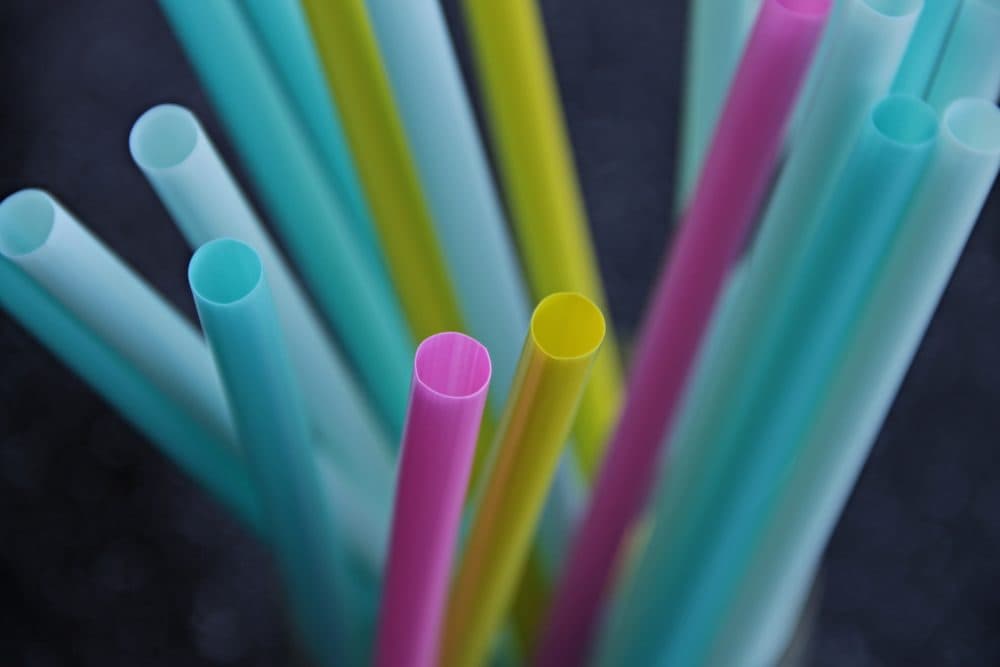Advertisement
View From The Top
As Cities And Companies Ditch Plastic Straws, Demand For Paper Rises

This month, Los Angeles joined a growing list of cities that have restricted the use of plastic straws in restaurants and businesses. This means more demand for paper straws, which is good news for the Indiana-based company Aardvark Straws.
Here & Now's Jeremy Hobson speaks with Andy Romjue, the president of Hoffmaster Food Service, which acquired Aardvark Straws in August.
Interview Highlights
On the demand for paper straws
“Well, it’s truly been astronomical. You know, Aardvark is a company head over the last three or four years [that has] been doubling sales each year. And as we have gone through with all of the different cities banning straws, as well as some of the eco and advocate groups really pushing for change in the environment, we've seen demand skyrocket. You know, 50, 60, 70, 100 times [from the] prior year. And really, pretty much everybody is looking to make a shift away from plastic straws.”
On other companies jumping in to make paper straws
“We know there's a couple of other companies that have jumped in, and anytime you get a market that's really booming like this one is, that’s to be expected. But where Aardvark is different is, number one, we've got a little bit of a head start. And number two, we've got a really big head start on making the highest quality and longest lasting paper straw on the market.”
On the international demand for paper straws
“Europe is looking to go single use, plastic free over the next couple of years. And obviously straws fit into that category. So there's some big demand coming there. As you move down through the Caribbean and a lot of the island nations around the world, they're looking to go. Australia is looking at some legislation, so yes this isn't just a U.S. thing, it's truly global.”
“Currently, we actually sell into 30 different countries and we expect that to continue to grow and, we look to continue to enlarge our footprint, not only from a U.S. standpoint, but also looking at potential in Europe.”
Advertisement
On paper straws’ compostability
“That is the key. Straws and how they hold up is really a function of a few things. It's the type of paper you're using, how many layers of paper you're using. The adhesive that holds it together and then the coating that goes around it. So you have to get the right mix of all those different types of things that allow it to last as long as possible, but then also has the ability that it will start breaking down when it gets into the oceans or waterways or into your compost or trash.
On how paper straws can improve
“So we always want to get better. Like I said, I think Aardvark and the reason we were interested in Aardvark, is they made the strongest straw in the world, but you'll still have people that say that, you know, it'll last as long as your drink will last. You can put it in most liquids and it'll last well over an hour. But there's folks that leave their straws in there for longer. There's people that, you know, use it differently. They want to stir. They want to do things that help their [drink] breakdown faster. So we're already in development of what we call ‘Straw 2.0.’ So what is the next generation of straw, you know, how can we change and play with those components that I mentioned to get something that lasts two, three, four times longer than the existing and holds up under even more extreme, you know, temperatures and usages?”
On the activist movement around using paper straws
“We've had a lot of conversations with a lot of the groups that have been pushing it and I found it very insightful. So really what the war is against the single-use plastics, whether it's a lid, a cup, a straw, a takeout container, all the things that you know we need to cut down on our usage as a race to help save the save the planet and leave it in better shape. Straws became the focal point because of really two things. Number one, you could definitely do without, in most cases. And number two, there was a viable alternative in the paper straw to offer a solution. Where we may not have figured out, you know, what the next plastic water bottle is or what the next takeout container that is cost effective or the next lid, straws had a solution. So they really attacked straws in a major way.”
On the difference in price between paper straws and plastic straws
“Right now, a paper straw would be three to four times the same cost as a plastic straw. Now you're talking fractions of a penny for the plastic straw versus a couple of pennies for the paper straw. But you know, in the United States, it's a billion-dollar market or so. So you know, when you double, triple, quadruple that, those are still real dollars that are flowing through. We think a lot of that will go away as people present straws upon demand or upon request. So you see a 30 to 40 percent decrease in straw usage overall. And then if they do need one we hope they're using [an] Aardvark paper straw.”
Julia Corcoran produced and edited this story for broadcast with help from Todd Mundt. Serena McMahon adapted it for the web.
This segment aired on March 14, 2019.
